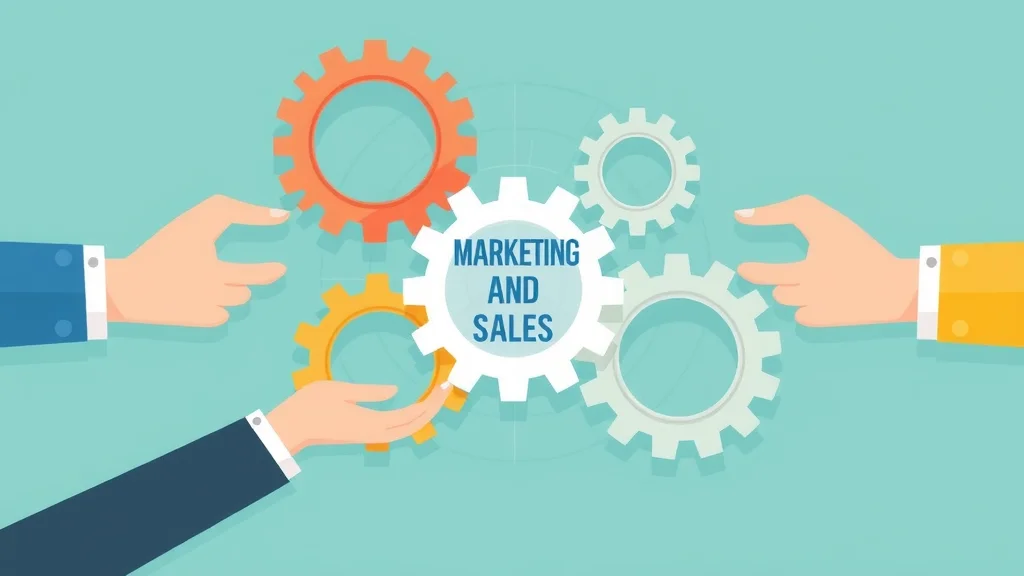Have you ever noticed that despite spending time and money on digital marketing, your local business struggles to get consistent traffic or new customers? Marketing alignment local business efforts could be the missing link you need. Recent insights reveal a quiet revolution where local businesses can generate steady, natural traffic without pumping extra budgets into ads or SEO gimmicks. This article unpacks what marketing alignment means for local businesses, revealing the strategic framework driving real results through synchronized reputation, social media, traffic, and automation.
Startling Facts About Marketing Alignment Local Business: The Quiet Revolution in Local Digital Marketing

The Accidental Discovery That Changed Local Traffic Forever
John Pickett, of Local Marketing Resource, explains, "Our Four Core System suddenly 'woke up' and started revealing a new dimension of digital communication, driving natural, high-intent local traffic without extra spending."
John Pickett, founder of Local Marketing Resource (LMR) in Muskegon, Michigan, describes a breakthrough his agency stumbled upon while analyzing client data. Without launching new campaigns or spending more on paid ads, some clients experienced an explosion in web visitors and appointment bookings. This unprecedented surge was not a fluke; it was the product of a perfectly synchronized marketing system working behind the scenes.
By leveraging their Four Core System — Reputation, Social Media, Traffic, and Funnels/Automation — local businesses began to harness a self-sustaining traffic cycle. This meant visits and engagements grew organically, stabilized by rhythmic, automated interactions grounded in genuine online reputation and social presence rather than paid tactics. For local businesses struggling to break through the clutter, this shift signals that sustainable, “owned” traffic flow is possible, offering new hope in the crowded digital space.
For local businesses looking to put these principles into action, understanding how to create a seamless client experience from the very first interaction is crucial. Discover practical strategies for optimizing your customer journey in the Waiting Room on Paid Traffic, which explores the importance of nurturing leads and building trust before they even walk through your door.
Understanding Marketing Alignment Local Business: Definition and Core Principles
What Is Marketing Alignment and How Does It Impact Local Businesses?

Marketing alignment local business refers to the strategic integration of key marketing elements to work harmoniously toward clear, sustainable growth goals. Instead of isolated or sporadic actions, alignment synchronizes reputation management, social engagement, traffic generation, and automation processes to create a seamless flow of customer attraction and conversion.
The impact on local businesses is profound. As John Pickett explains, "Alignment is when all four cores move together, in a rhythmic harmony, creating organic, sustainable traffic flow." When each marketing element supports the others, it builds trust and provides consistent visibility that doesn’t rely on temporary bursts or expensive campaigns. In real terms, this means your business no longer chases leads but naturally attracts the right customers at the right time.
The Four Core System: Reputation, Social Media, Traffic, and Funnels/Automation
The Four Core System is the backbone of successful marketing alignment local business strategies:
Reputation: The foundation that establishes trust through genuine reviews and feedback that boost online credibility.
Social Media: The amplifier that shares authentic stories and updates to expand reach organically.
Traffic: Targeted attention driven by relevant signals that connect interested customers to your business.
Funnels & Automation: The order keeper that nurtures leads and converts interest into consistent appointments or sales.
When these cores are aligned, your marketing becomes a smoothly running engine that continuously attracts and converts without constant manual intervention.
Sales and Marketing Alignment: How Synchronizing Teams Drives Local Business Growth
The Role of Sales and Marketing Teams in Achieving Marketing Alignment
Effective marketing alignment local business is not just about technology or tactics; it requires sales and marketing teams working together toward shared goals. When these teams communicate and coordinate their efforts, they create a unified customer journey that reduces friction and increases conversion rates.
For local businesses, this alignment ensures that marketing generates qualified leads that sales can convert effectively. John Pickett highlights that such cohesion leads to a more predictable flow of traffic and sales, eliminating the guesswork that often plagues small businesses trying to juggle multiple roles.
Shared Goals and Collaborative Strategies for Local Business Success

Shared objectives align priorities for sales and marketing teams. For example, a marketing campaign focused on collecting five-star reviews feeds directly into sales conversations that build trust with prospective customers. Collaborative strategies like coordinated follow-ups and personalized messaging come together to strengthen local presence and reputation.
This teamwork helps local businesses move beyond fragmented marketing efforts into deliberate, measurable growth. As these teams synchronize, they create a brand experience that feels authentic and reliable, essential to standing out in crowded markets.
Marketing and Sales Alignment in Practice: Tools, Techniques, and Automation
Leveraging Automation and AI for Seamless Marketing Alignment Local Business
Automation and AI have become essential allies in sustaining marketing alignment local business. These tools handle routine communications, monitor engagement, and deliver timely responses that keep prospects warm and connected without constant manual effort.
John Pickett clarifies, "AI didn’t create the system; it revealed how our CIEI framework synchronizes engagement signals to produce steady, self-sustaining traffic." Understanding these technologies as facilitators rather than causes empowers local businesses to prioritize authenticity and trust as the heart of their marketing efforts.
Content Intelligence & Expert Intelligence (CIEI): The Game Changer
At the center of this digital revolution is CIEI — Content Intelligence & Expert Intelligence — a system that interprets real-time online interactions and adjusts marketing flows accordingly. This integration ensures all Four Cores — reputation, social, traffic, and funnels/automation — respond organically to customer behaviors, creating a natural rhythm.
This system reveals how marketing elements can “talk” to each other behind the scenes, making each new review, post, or click trigger the next step in the customer journey without manual micromanagement. The result is marketing that breathes with your business, growing steadily and predictably over time.
Common Challenges and Misconceptions About Marketing Alignment Local Business
Debunking Myths: Marketing Alignment Is Not Just About Spending More

A common misconception is that sustained local traffic requires continuously increasing advertising budgets. The reality of marketing alignment local business is quite different. Rather than more spending, it’s about smarter coordination — making existing assets like reputation and social media work harder and in harmony.
This approach demystifies marketing by showing how consistent authenticity and structured follow-up can outperform costly, disconnected campaigns.
Avoiding Disconnected Efforts: The Importance of Rhythm, Relevance, and Repetition
Disconnected marketing efforts—posting here, collecting reviews there—fail to build momentum. The secret to effective marketing alignment lies in rhythm, relevance, and repetition. Rhythm implies timely communications that match customer interest cycles. Relevance ensures messages resonate with what your local audience cares about. Repetition plants your brand firmly in their minds without overwhelming them.
This triumvirate supports the Four Core System by making every action meaningful and connected, fueling steady growth rather than unpredictable spikes.
Actionable Tips for Local Businesses to Achieve Marketing Alignment
Conducting a Full Digital Audit to Identify Breaks in Alignment

The first step toward alignment is understanding where your current marketing efforts fall short. A comprehensive digital audit examines your online reputation, social presence, traffic sources, and automation workflows, pinpointing gaps or inconsistencies disrupting the customer journey.
Once these “breaks” are identified and addressed, your business can regain a unified marketing rhythm that feels less like juggling and more like a well-oiled machine.
Building Authentic Reputation and Consistent Social Media Presence
Authentic reputation building requires continually encouraging and responding to honest customer feedback, which serves as the invisible engine driving local search visibility and trust. Parallelly, maintaining a consistent social media presence with genuine posts—not just promotions—cultivates community relationships and keeps your business top of mind.
When reputation and social media work hand-in-hand, they create an environment ripe for attracting engaged, qualified traffic.
Implementing Funnels and Automation to Nurture and Convert Traffic

Funnels and automation transform casual interest into loyalty by guiding prospects through tailored messages and timely follow-ups. Using automated tools reduces manual work and personalizes the experience, ensuring each visitor is nurtured appropriately.
This structured approach not only increases conversions but reduces stress for business owners who often manage marketing alongside many other responsibilities.
What You'll Learn: Key Takeaways on Marketing Alignment Local Business
Traditional Marketing |
Marketing Alignment Local Business Approach |
|---|---|
Focus on isolated campaigns and spending |
Creates sustainable, organic local traffic through system synchronization |
Reputation and social often disconnected from sales |
Four Core System synchronizes reputation, social media, traffic, and automation |
Relies heavily on paid ads and SEO tricks |
AI and CIEI enhance but do not replace authentic engagement |
Unpredictable traffic with spikes and crashes |
Alignment reduces stress and increases predictability for business owners |
Visibility feels rented and temporary |
Small businesses can own their visibility instead of renting it |
Marketing alignment creates sustainable, organic local traffic.
The Four Core System synchronizes reputation, social media, traffic, and automation.
AI and CIEI enhance but do not replace authentic engagement.
Alignment reduces stress and increases predictability for business owners.
Small businesses can own their visibility instead of renting it.
People Also Ask: Answering Your Top Questions on Marketing Alignment Local Business
What is the 3 3 3 rule in marketing?
The 3 3 3 rule is a simple marketing guideline suggesting you communicate with a prospect three times over three days, using three different methods. This layered approach increases message retention and helps nurture leads without overwhelming them.
What's the best way to market a local business?
For local businesses, the best way is to combine authentic reputation building with steady social media engagement, targeted local traffic generation, and effective follow-up automation. This creates trust and ensures your business stays visible and relatable to your community consistently.
What is marketing alignment?
Marketing alignment is the coordinated strategy of syncing all marketing activities—reputation management, social media, traffic acquisition, and conversion funnels—into a cohesive, sustainable system that drives growth efficiently and predictably.
What is the 7 times 7 rule in marketing?
The 7 times 7 rule states that prospects need to see or hear your marketing message seven times across seven different channels before taking action, emphasizing the importance of repetition and multi-channel presence in building awareness and trust.
Conclusion: Why Marketing Alignment Local Business Is Essential for Sustainable Growth
John Pickett concludes, "Stop chasing every trend. Build alignment. Let AI and automation accelerate what already works to turn visibility into an owned asset."
Achieving marketing alignment local business means creating a marketing ecosystem that works in harmony — building trust, expanding visibility, and converting attention with consistency and clarity. It’s the difference between spending to hope and investing to grow sustainably.
As you continue to refine your marketing alignment strategy, remember that true growth comes from continually enhancing every stage of your customer’s journey. If you’re ready to explore advanced methods for deepening client relationships and maximizing every touchpoint, take the next step by exploring the broader strategies outlined in the Waiting Room resource. There, you’ll uncover actionable insights to elevate your local business’s reputation, engagement, and conversion—empowering you to build a marketing system that not only attracts but retains loyal customers for the long term.
Call to Action
Need Clients Seeing Your Business FIRST?
Build Your Online Presence & Grow Your Business Affordably.
Email John@LocalMarketingResource.com to start your alignment journey today.
Sources: https://localmarketingresource.com
 Add Row
Add Row  Add
Add 




Write A Comment